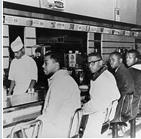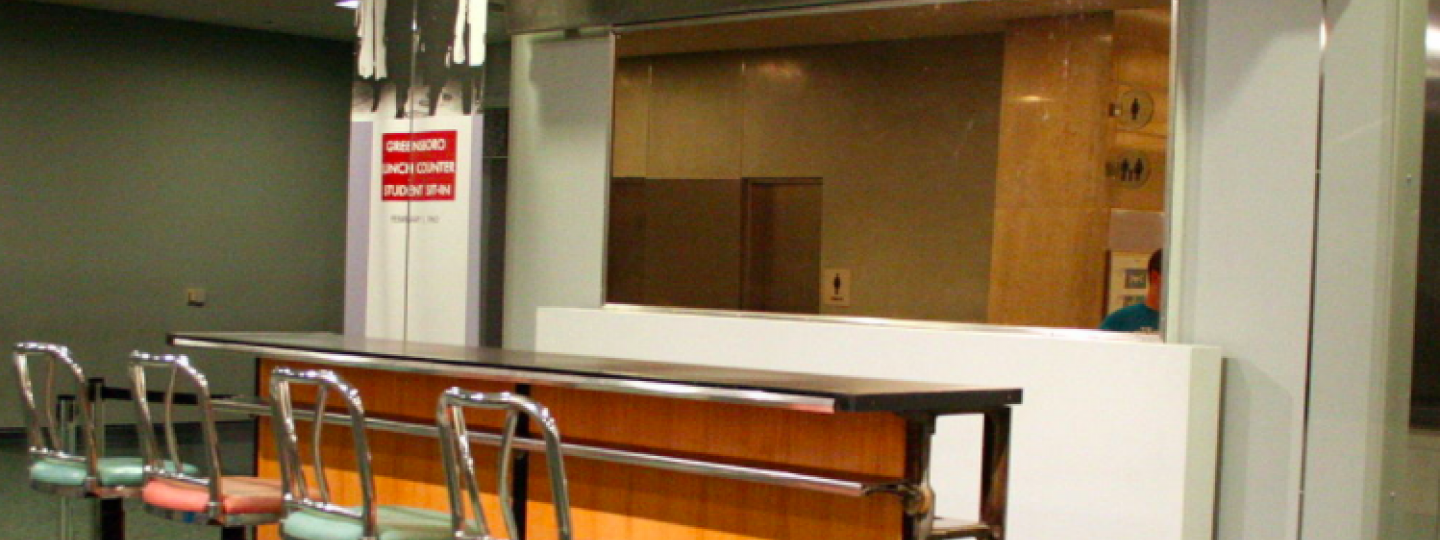Editor's note: This column first appeared on the author's blog, Media, Disrupted. It is reprinted here with permission.
In January 2010, when I was editor of the News & Record, we were preparing to publish a special section on the 50th anniversary of a pivotal moment in the history of Greensboro: the sit-ins at the Woolworth lunch counter. We were pulling out all the stops with historical pieces, where-are-they-now stories, comments from readers, photography. We even got President Obama to reflect on the event.
I thought about that when I read about the editor of the National Geographic writing about the magazine’s racist past.
One of my tasks was to search the newspaper’s editorials about the sit-ins in 1960. I hoped to find some desk-pounding stem-winders demanding equal treatment and integration of the city’s lunch counters.
I was disappointed.
I don’t have access to the morgue any longer, but, because of the historical nature of the event, the Greensboro Public Library helps out with pdfs. (Aren’t libraries the best?)

The first sit-in involving four N.C. A&T students occurred on Feb. 1. Nothing made the papers though, until Feb. 2 when the afternoon paper, the Greensboro Record, reported on the second day of the sit-ins. That story appeared on the local front of the paper. The next day, Feb. 3, the morning paper, the Daily News, published its first story, also on the local front. (Of note, white and African-Americans are referred to as “students” and “youths.” One person is referred to as “a white boy.”)
The first editorial appeared Feb. 3 in the Record. It wasn’t against the event, but it wasn’t particularly supportive, either. “Another obvious fact is that the ‘sit down’ demand for service, which went unheeded, served the cause of race relations badly. While the incident was without violence, it was nonetheless an attempt to force an issue by public demonstration.”
It ends: “The white leadership of the community can ill afford to be passive and indifferent under the circumstances. There is a dangerous vacuum in the relations between the races in Greensboro, we fear.”
The Daily News didn’t editorialize until Feb. 5. “Negro patrons occupying seats at the lunch counter have a position which demands consideration. In downtown Greensboro, there are few, if any restaurants or cafes where they can be served. Resentment against this dearth of facilities is not without justification."
“But the way to remedy such a situation is through petition and negotiation, rather than through a sit-down strike. No effort has been made to contact the Woolworth management about providing such facilities. They are made available in Woolworth stores elsewhere. We suggest that a delegation of potential lunch counter patrons get in touch with the management and see whether something can be worked out.”
Both editorials express concern that the sit-ins could result in violence — and given the anger of the white students protesting the protesters, that concern is valid. Yet, the bigger picture — that black patrons are being discriminated against — goes largely unremarked.
The Record’s editorial on Feb. 6 expresses concern about violence once again as it suggests that both sit-in participants and those who object to their presence should be in school. “We can see nothing but possible trouble resulting from the sitdown tactics being employed by the Negro students. What has been made into a grim sort of ‘fruit basket’ game is not only time-wasting, but it is potentially dangerous and expensive.”
(Who knows what the writer would say about high school students walking out to protest gun violence today.)
On Feb. 15, the Daily News wrote: “To any Tar Heel with common sense the best answer would have been to clear the stores of three groups: customers anxious to be served, the press, TV and radio and sundry curiosity seekers. That policy would have been to serve the handful of Negro customers who first came and sent them on their
way as rapidly as possible. This was not done for a variety of reasons, some of them understandable."
“But now that the issue still hangs over the individual stores and communities, creating dark clouds of uncertainty, the only sensible course is to find some way to serve all those customers who want to be served. It should be done if it means setting up little separate but equal areas as a start, or ripping out all the seats and letting everybody eat standing up or simply at some unannounced time initiating a policy of service for all.”
Both newspapers were careful in not telling the city or the business community what action to take, other than to negotiate. To put it gently, it’s a particularly light touch for an editorial page these days.
Then, on Feb. 27, the Daily News wrote an editorial headlined: “An idea whose time has come.”
“The idea’s moral force — that colored men no longer will tolerate being served at nine counters and rejected at the tenth — cannot be denied. All of Greensboro’s largest white churches had sermons on the subject Sunday — and invariably they recognized the moral sanctity of the ends sought, if not the means employed, by the protesters."
“Sometimes the truth hurts. This is such a time. Sometimes the spirit, rather than the letter, of the law prevails.”
There are others, and you can read the entire coverage here.
I didn’t live in Greensboro at the time, and probably wouldn’t have paid it much attention if I had because I was 7 years old. I’m schooled enough in the history of the South to know that a newspaper in a Southern town had a tightwire to walk when it came to civil rights. William Chafe wrote an excellent book on Greensboro at the time titled “Civilities and Civil Rights.”
I don’t think the papers have anything to apologize for their editorial stands. They weren’t overtly racist. Perhaps they helped the city avoid racial violence. But the call for justice was weak and took a while. Looking at history and society now 58 years removed, my guess is that the editorial writers wish they had pounded their desks, demanding equal service for all races. I know that I wish I had written about this for the 2010 50th anniversary section.
President Obama nailed it in his piece, referring to the Greensboro Four:
“They knew they would be the subject of ridicule and bigotry upon taking their seats. But they also knew that what was happening in Greensboro and throughout the country was an affront to America’s founding ideals of freedom, equality and justice for all.”






